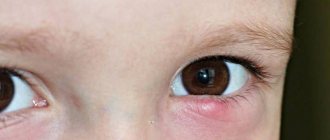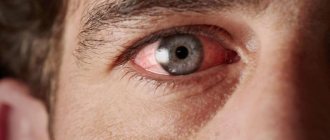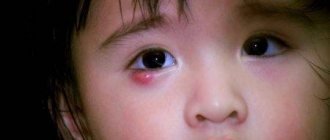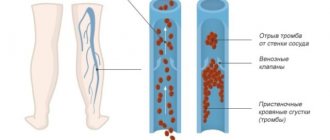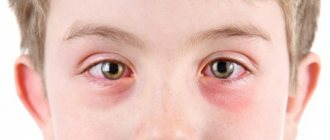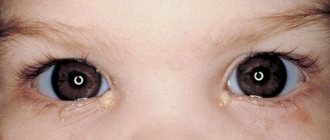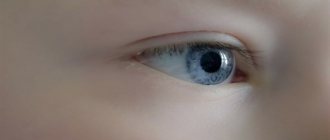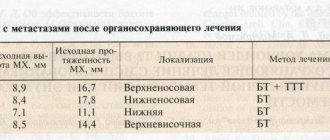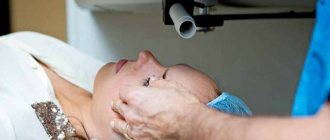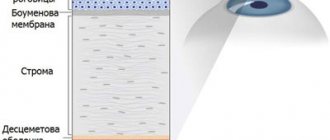directions
Chalazion injection is an effective and safe way to treat eyelid inflammation. Chalazion is an inflammatory process in the cartilage tissue of the eyelid in the form of a small round-shaped compaction. The inflammation is often called a “hailstone” or “nodule”. Chalazion is often confused with stye, but chalazion does not go away on its own, is a chronic pathology and can provoke chronic conjunctivitis and other eye diseases. Inflammation appears as a result of chronic proliferative inflammation of the meibomian gland, caused by the accumulation of fluid in the sebaceous gland.
Our clinics in St. Petersburg
Medical center on Pionerskaya Polikarpov Alley 6k2 Primorsky district
- Pionerskaya
- Specific
- Commandant's
Medical center South-West Marshal Zhukov Ave. 28k2 Kirovsky district
- Avtovo
- Avenue of Veterans
- Leninsky Prospekt
Medical center in Devyatkino Okhtinskaya alley 18 Vsevolozhsk district
- Devyatkino
- Civil Prospect
- Academic
For detailed information and to make an appointment, you can call +7 (812) 640-55-25
Make an appointment
Chalazion
Signs
With a chalazion, a round, dense nodule appears on the upper or lower eyelid. The skin over it is inflamed, red, but may also be a normal color. The conjunctiva becomes inflamed and red. The nodule gradually increases in size. When you touch the nodule, there is sometimes pain, but more often palpation is painless. The diseased eyelid moves more slowly than the healthy one and rarely blinks. Sometimes, if the nodule puts too much pressure on the cornea, vision may decrease.
Description
Meibomian glands are sebaceous glands located in the thickness of the eyelid along the eyelash line. Their excretory ducts are located at the base of the eyelashes. The secretion of the meibomian glands is part of the tear fluid. In the upper eyelid, a person has approximately 30-40 glands, and in the lower eyelid - only 20-30.
A chalazion forms when the meibomian gland becomes blocked or clogged. In this case, the secretion of the gland cannot come out, it accumulates, as a result, the inflammatory process begins and a nodule is formed. This disease affects both adults and children.
The main reason for blockage of the meibomian gland duct is poor hygiene. This can happen if a person often rubs his eyes with dirty hands or forgets to wash his face at night. Chalazion can also develop due to improper use of contact lenses. Of course, an additional risk factor is a weakened immune system.
Chalazion can also be a consequence of too intense work of the sebaceous glands. This happens with congenitally oily skin or with certain endocrine diseases, for example, diabetes. Often this disease develops as a complication of barley.
If an infection joins the chalazion, an abscess develops. At the same time, the skin around the nodule swells and turns red. Sometimes a fistula (canal) forms between the chalazion cavity and the skin of the eyelid. The chalazion spontaneously opens and pus flows out through the fistula. However, in this case, surgery cannot be avoided, since the pyogenic capsule still remains, and there is a high risk of recurrent abscess.
Due to constant irritation and pressure on the eyeball, conjunctivitis can develop as a complication of chalazion.
Diagnostics
To diagnose a chalazion, an examination by an ophthalmologist is sufficient. However, if a chalazion occurs repeatedly in the same place, it would be good to check with an oncologist to rule out a malignant meibomian gland tumor.
Treatment
In the early stages of the disease, drug treatment is possible. And the earlier treatment is started, the greater the likelihood of using only medications. The doctor prescribes antibacterial eye drops, ointments, and physical therapy. For chalazion, dry, warm compresses are recommended on the eye area.
Sometimes, if such treatment does not help, steroid hormones are prescribed. Under their influence, the chalazion resolves.
And those who did not go to the doctor for a long time and treated themselves or did not follow the doctor’s recommendations will most likely have to visit a surgeon.
Usually surgery is performed if the nodule is more than 5 mm in diameter. The operation is performed on an outpatient basis under local anesthesia and takes a few minutes. Patients usually tolerate it well and return to normal life after 2-3 days. But after surgery it is still necessary to undergo a course of antibiotic therapy. And after 7 days - come to the ophthalmologist for a re-examination.
In addition, it is possible to perform the operation using a laser. This operation is less painful and there are fewer relapses after it.
Prevention
Prevention of chalazion involves proper nutrition, strengthening the immune system, and taking vitamins if necessary. It is also necessary to avoid infections.
A special place is occupied by personal hygiene. Don't rub your eyes with dirty hands. Many people think that the back of the hand is cleaner, but this is not true. If you need to scratch your eye, it is best to wash your hands first.
Those who use contact lenses should change the solution promptly and not wear lenses longer than prescribed.
© Dr. Peter
Chalazion treatment
The choice of treatment methods for the disease depends on the characteristics of its course. If the inflammation is small, conservative therapy is used (physiotherapy, drops, ointments that absorb pus and relieve inflammation). If the disease continues for a long time, the resorption of the tumor is carried out by introducing an injection into the chalazion cavity - corticosteroid therapy. The procedure is painless, performed on an outpatient basis and leaves no marks on the eyelids. In the Medicenter clinic network, this method of treatment for chalazion is most often used. A qualified specialist at our clinic will quickly and efficiently perform the procedure.
If these methods are ineffective, surgery is required.
Causes of chalazion
“A meibolian cyst, or in other words a chalazion, refers to diseases of the eyelids and is a blockage of the duct of the meibolian gland, the fatty gland of the cartilaginous plate of the eyelid. When it becomes inflamed, secretion accumulates in the thickness of the eyelid, and a pea-shaped formation appears on the person’s eyelid. This is a chalazion:
- it is hard to the touch
- and when the eyelid is everted, it looks like a granuloma.
It grows slowly, often completely painlessly.
The reasons for the development of chalazion are different:
- decrease in the body's protective functions
- colds
- violation of personal hygiene rules
- wearing contact lenses, etc.
This may also be due to the fact that a person, in principle, has too oily skin: increased production of the secretion of this gland can lead to blockage of the tear outflow.
Prevention
To prevent a condition that is dangerous due to complications and the occurrence of ophthalmic diseases, it is worth following preventive measures:
- adhere to hygiene standards, wash your hands regularly;
- promptly treat ophthalmological pathologies;
- massage the eyelids;
- use high-quality cosmetics with anti-comedogenic properties;
- a balanced diet and fluid balance will help maintain a high level of immunity;
- eliminate bad habits that affect the immune system;
- during the cold season, take vitamin cocktails from dried fruits and honey, herbal mixtures.
We recommend: Aloe for the treatment of otitis media and other ear diseases
The use of traditional methods, especially in the treatment of childhood eye diseases, is possible only after consulting a doctor. The biologically active stimulant aloe has a number of restrictions for use.
Contraindications for external use – individual sensitivity, the presence of malignant tumors. Children should not take aloe orally, as a persistent allergic reaction may occur.
Aloe juice is a well-known immunostimulant and has a bactericidal effect. Positive feedback on use confirms the effectiveness of the succulent in the treatment of chalazion. Biologically active components can also be used for children. This effective method replaces hormonal drugs, prevents complications, and quickly normalizes the condition.
Aloe for chalazion
The disease often occurs in the age group from 30 to 50 years. But in children who neglect to wash their hands, blockage of the meibomian gland is possible. Unlike stye, which goes away on its own, chalazion requires treatment. When neglected, it provokes various ophthalmological diseases, but in the early stages it is possible to carry out independent therapy; traditional methods are used, including the use of aloe against chalazion.
Beneficial features:
- anti-inflammatory effect is observed;
- has antiseptic properties;
- natural biostimulant;
- relieves swelling and redness;
- facilitates eyelid movements;
- reduces painful and uncomfortable sensations;
- speeds up the recovery process.
Proliferative inflammation of the eyelid can be cured with the help of agave, known for its immunomodulatory effect.
Aloe composition:
- allantoin has a pronounced moisturizing effect, is also responsible for transporting active elements to cells, stimulates the healing of wounds and damage;
- vitamins A, E, C, group B, are powerful antioxidants, restore cells, protect against oxidation;
- essential oils have an antiseptic effect;
- flavonoids have a beneficial effect on the vascular system and healing processes;
- organic acids normalize cell metabolism, neutralize toxins and oxidants.
We recommend: Aloe for bronchitis - useful recipes
Symptoms
The main symptom of the development of a chalazion in a child is the appearance of swelling localized at the edge of the eyelid close to the eyelash line. As the pathological process develops, this swelling takes on the appearance of an elastic compaction with smooth edges. Outwardly, it resembles a pea. The inner surface of the eyelid turns red.
Chalazion rarely causes pain. Pain can only appear if infection has occurred. The addition of infection is marked by the following signs:
- pain;
- swelling;
- redness;
- independent opening of purulent exudate on the side of the inner edge of the eyelid.
If such signs are present, a comprehensive use of anti-inflammatory, antibacterial and physiotherapeutic treatment is required.
The main difference between chalazion and stye is the ability to spontaneously break through:
- barley, having reached a certain size, always breaks through and disappears completely;
- The chalazion breaks out on its own in very rare cases; it increases in size and thickens.
Recipes with aloe
The use of the plant requires testing for an allergic reaction. The presence of individual intolerance can lead to a worsening of the condition.
Aloe ointment
To quickly get rid of chalazion, you can prepare aloe ointment. An effective universal remedy relieves inflammation and has a bactericidal effect. It is also used for barley, to prevent the transition of an acute process to a chronic course. If the condition is neglected, you can purchase aloe extract for chalazion so as not to waste 3 days on activating the biocomponents of the plant.
Ingredients:
- 5-7 leaves of mature aloe;
- 5 ml wheat germ oil.
Rinse the castings under running water and dry on a towel. Wrap in parchment and place on the side shelf of the refrigerator. After 3 days, pass the aloe shoots through a meat grinder. Strain the prepared mass through cheesecloth. Mix with wheat germ oil and transfer to a prepared glass jar. Apply the ointment to the eyelids, but not the chalazion itself, repeat the procedure 2 times a day for a week.
Aloe compresses
A folk recipe for treating chalazion with aloe juice is effective in the early stages of the disease. The active elements of the succulent neutralize bacteria, relieve swelling and redness. This universal remedy has no age restrictions and is also used to treat children.
Components:
- 20 ml aloe juice;
- 20 ml mint infusion.
Cut off the aloe shoots, wrap in foil and place in the refrigerator for a day. Pour boiling water over a handful of herbs and let steep for 2 hours. Squeeze the juice from the prepared leaves and mix with cooled, strained mint infusion. Soak cotton pads, close your eyes and place on your eyelids. Repeat the procedure 4-5 times a day until the condition is completely restored.
Aloe drops
The juice of the plant will help to cope with chalazion; drop aloe into the eye, replacing hormonal drugs. Antiseptic and anti-inflammatory properties quickly relieve redness and swelling; use is allowed even for a one-year-old child. This is also the best way to use aloe for chalazion in preschool children. The procedure does not cause any discomfort; the bioactive natural preparation normalizes the condition in the shortest possible time.
We recommend: The healing properties of aloe - benefits and contraindications
Components:
- 5 ml aloe juice;
- 20 ml of calendula decoction.
Cut off the lower leaves of a three-year-old aloe, rinse, and dry on a paper towel. Wrap in parchment and place in the refrigerator for 12 hours. Then, using gauze, squeeze out the juice of the plant and transfer it to a prepared glass container. Prepare a decoction of calendula flowers - pour boiling water over a handful of inflorescences and place in a water bath for 10 minutes. Strain and let cool, then combine with succulent juice. Instill 2 drops in the morning and evening for 3-5 days.
